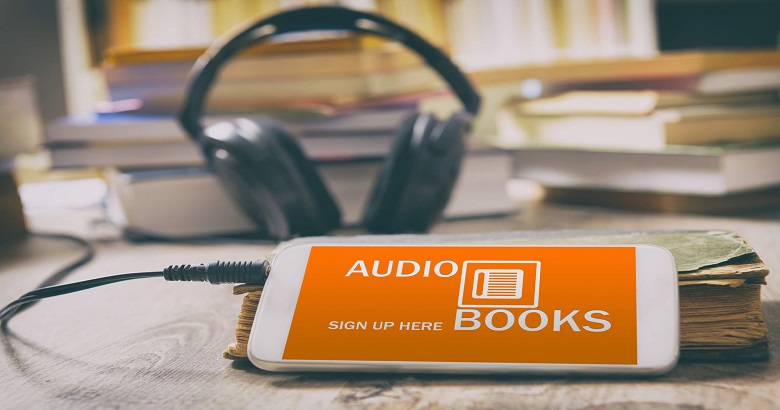Have you ever wanted to create an audiobook but felt overwhelmed by the process? The idea of recording an entire book may seem daunting, but with the right approach, it can be a rewarding and enjoyable experience. Whether you’re an author looking to make your own audiobook, a voice artist eager to showcase your skills, or simply someone passionate about storytelling, this guide will take you through the entire process step by step.
What is an Audiobook?
An audiobook is a recorded version of a book that listeners can enjoy on digital platforms. Audiobooks come in various genres, including fiction, non-fiction, self-help, biographies, and more. Some are narrated by authors themselves, while others are brought to life by professional voice actors. Audiobooks are typically available for purchase or subscription through platforms like Audible, Apple Books, and Google Play Books.
Why Should You Make Your Own Audiobook?
- Expands Your Audience – Many readers prefer listening over reading, allowing you to reach a broader audience.
- Monetization Opportunities – The audiobook industry is worth billions and growing each year.
- Enhances Your Content – An audiobook adds another dimension to your book, making it more engaging and immersive.
- Convenience for Listeners – People can enjoy audiobooks while commuting, working out, or doing chores.
- Boosts Your Brand – If you’re an author or entrepreneur, an audiobook can establish you as an authority in your field.
Can You Create an Audiobook Yourself?
Absolutely! With modern technology, creating an audiobook is more accessible than ever. While the process requires planning, effort, and some investment, it is entirely possible for individuals to record, edit, and distribute their audiobooks independently.
What You Need to Record an Audiobook
1. A Great Story or Book
Before you start recording, ensure that the book you’re working with is compelling and engaging. If you’re using someone else’s book, you must obtain the necessary rights to create an audiobook.
2. A Skilled Narrator
You can either narrate your book yourself or hire a professional voice actor. A good narrator should have:
- A clear, engaging voice
- Proper pacing and pronunciation
- The ability to express emotions and character voices
3. Quality Recording Equipment
Investing in good recording equipment will significantly improve the final product. Essential items include:
- Microphone – A high-quality condenser microphone is recommended.
- Pop Filter – Helps reduce plosive sounds like “p” and “b.”
- Headphones – Noise-canceling headphones help you monitor your recording.
- Recording Software – Programs like Audacity, Adobe Audition, or Riverside are great options.
- Soundproofing – A quiet environment or a sound-treated room improves audio clarity.
4. Recording and Editing Software
Choose software that allows you to record and edit efficiently. Some popular choices include:
- Audacity (Free, beginner-friendly)
- Adobe Audition (Professional-grade)
- Reaper (Advanced features at an affordable price)
5. A Budget
Before starting, outline your budget. Costs may include:
- Equipment purchases
- Hiring a narrator
- Audio editing services
- Distribution and marketing expenses
10 Steps to Creating an Audiobook

Creating an audiobook requires careful planning, technical preparation, and strategic marketing to ensure a high-quality listening experience. Whether you’re narrating the book yourself or hiring a professional, each step plays a crucial role in bringing your book to life in an engaging audio format.
Step 1: Create Your Draft First
Before you begin recording, read through your manuscript carefully, keeping in mind that not everything translates seamlessly into an audio format. Highlight areas that may need adjustments, such as references to images, charts, or footnotes. If your book contains visual elements, consider how you will describe them to listeners in a way that makes sense without the visual context. Additionally, mark up your script with notes for pauses, emphasis, or pronunciation guides to ensure a smooth delivery during recording.
Step 2: Choose a Narrator
Deciding who will narrate your audiobook is an important choice that impacts the listening experience. If you decide to narrate it yourself, practice reading aloud to develop clarity, proper pacing, and a consistent tone. If you prefer to hire a professional narrator, platforms like ACX (Audiobook Creation Exchange) and Voices.com connect authors with experienced voice artists. Listen to sample recordings to find a narrator whose voice and style align with the tone of your book.
Step 3: Set Up Your Recording Space
A quiet, acoustically treated recording space is essential for producing a professional-quality audiobook. Record in a room with minimal background noise and avoid spaces with hard surfaces that can cause echo. Many audiobook creators use DIY soundproofing techniques, such as covering walls with blankets, using foam panels, or even recording in a closet for a natural sound-dampening effect. Investing in a good-quality microphone and pop filter will also improve the overall sound quality.
Step 4: Record Your Audiobook
Recording an audiobook can be a lengthy process, so it’s best to break it into manageable sessions to maintain vocal consistency and prevent fatigue. Keep sessions relatively short, around 30-45 minutes, to maintain your energy and vocal clarity. Hydration is key—keep water nearby to prevent dry mouth, and take breaks as needed. Record in segments, ensuring consistency in tone, pacing, and volume throughout the book.
Step 5: Edit the Audio
Once the recording is complete, the next step is to edit your audio files. This involves removing mistakes, background noise, and distracting breath sounds. Editing software such as Audacity, Adobe Audition, or GarageBand can help refine the audio by adjusting pacing, removing awkward pauses, and applying noise-reduction techniques. This step ensures a polished and professional final product that enhances the listener’s experience.
Step 6: Master Your Audio Files
Mastering involves fine-tuning the audio to meet industry standards. Normalize volume levels so that listeners don’t have to constantly adjust their settings. Each chapter should be saved as a separate file for ease of navigation. Most audiobook distributors require specific file formats such as MP3 (192 kbps or higher) or WAV files. Ensuring your files are properly formatted will make the distribution process smoother.
Step 7: Create Cover Art
Your audiobook needs an eye-catching cover that meets retailer specifications. Most platforms require a square 2400 x 2400 pixel JPG image that clearly represents your book’s theme and genre. If you have design experience, tools like Canva can help create a professional-looking cover. Alternatively, hiring a graphic designer on Fiverr or Upwork can ensure your cover meets industry standards while standing out in the crowded audiobook market.
Step 8: Distribute Your Audiobook
To reach the widest audience, consider distributing your audiobook through platforms such as ACX (which distributes to Audible, Amazon, and iTunes), Findaway Voices, or Author’s Republic. These platforms offer different distribution models, including exclusive and non-exclusive agreements. Exclusive distribution with ACX may provide higher royalties but limits your ability to sell the book elsewhere, while non-exclusive options allow you to distribute on multiple platforms for greater reach.
Step 9: Monetize Your Audiobook
Setting the right price for your audiobook is crucial for maximizing sales. Research comparable audiobooks in your genre to determine a competitive price. To attract early listeners, consider offering promotional discounts or free preview chapters. Another strategy is using a royalty-share agreement with your narrator, which reduces upfront costs by allowing them to share in the book’s revenue. Additionally, bundling your audiobook with the eBook or print version can increase sales.
Step 10: Promote Your Audiobook
Once your audiobook is available, marketing is essential to drive sales. Share preview clips on social media platforms like Instagram, Facebook, and Twitter to generate excitement. Reach out to book bloggers, influencers, and podcast hosts who might be interested in reviewing your audiobook. Paid advertising on platforms like Facebook, YouTube, and Instagram can also help increase visibility. Additionally, consider listing your audiobook on podcast platforms or running special promotions to attract more listeners.
Finale
Creating an audiobook may seem complex, but with proper planning and effort, it can be a fulfilling and profitable experience. Whether you’re recording a novel, self-help book, or business guide, following these steps will help you produce a professional-quality audiobook. Start today, and bring your words to life in a whole new way!
Frequently Asked Questions
1. How do I choose the right narrator for my audiobook?
Choosing the right narrator is crucial because their voice will shape your listeners’ experience. Consider the tone, pace, and style of your book when selecting a narrator. If you’re narrating it yourself, practice different vocal deliveries to match the emotions and themes of your book. For professional narrators, platforms like ACX allow you to listen to samples and choose someone who aligns with the mood and personality of your story. You may also want to think about their vocal range and experience with your genre.
2. What are the key differences between recording an audiobook yourself vs. hiring a professional narrator?
Recording the audiobook yourself gives you full creative control, ensuring your personal connection to the material is conveyed through your voice. However, it requires skill in voice acting, pacing, and consistency. A professional narrator, on the other hand, brings expertise and can enhance the experience with their voice acting skills, different character voices, and vocal nuances. It may also save you time and effort, especially if you’re not experienced with voice recording.
3. Can I record my audiobook in a home studio, or do I need a professional studio?
You can absolutely record your audiobook at home, as long as you have the right equipment and a quiet environment. Many audiobooks are successfully recorded in home studios. The key is minimizing background noise and using soundproofing techniques like blankets, foam panels, or even recording in a closet. With the right microphone, headphones, and editing software, your home recording can produce professional-quality audio.
4. What common mistakes should I avoid when recording my audiobook?
Some common mistakes include ignoring the importance of vocal rest, inconsistent audio quality between sessions, and neglecting to remove unwanted background noise or mistakes during editing. It’s essential to keep your pacing steady and ensure that you don’t rush through the material. Always take breaks to avoid vocal strain and keep your recordings fresh. Also, pay attention to pronunciation, especially with unfamiliar names or technical terms, to avoid errors that can interrupt the listening experience.
5. How can I make my audiobook stand out in a crowded market?
To stand out, ensure that your audiobook is of high production quality, with clear narration, minimal background noise, and good pacing. Focus on creating a captivating cover design and an engaging book description to draw potential listeners in. You can also leverage social media marketing, book giveaways, and promotional partnerships with influencers to boost visibility. Offering bonus content, such as interviews, behind-the-scenes insights, or author commentaries, can also differentiate your audiobook from others in your genre.




